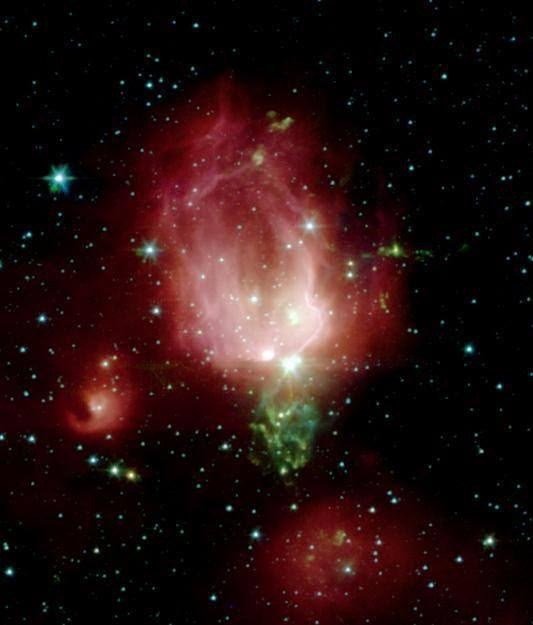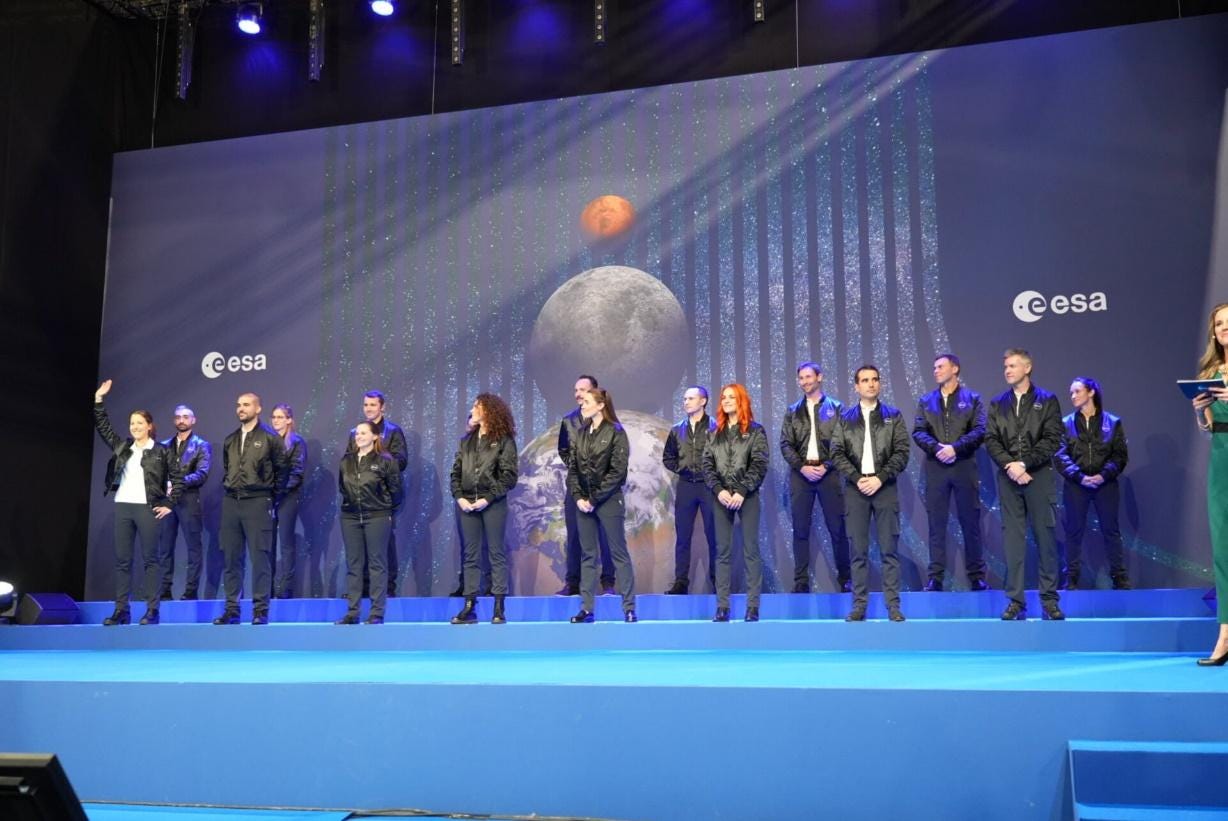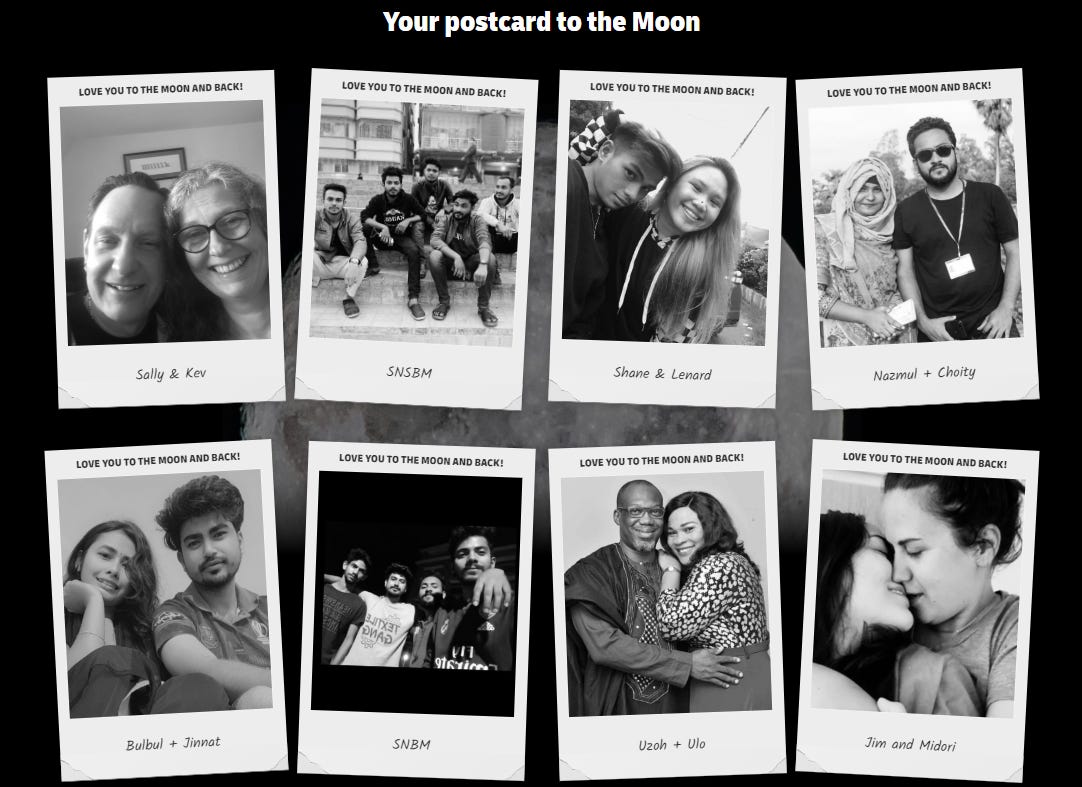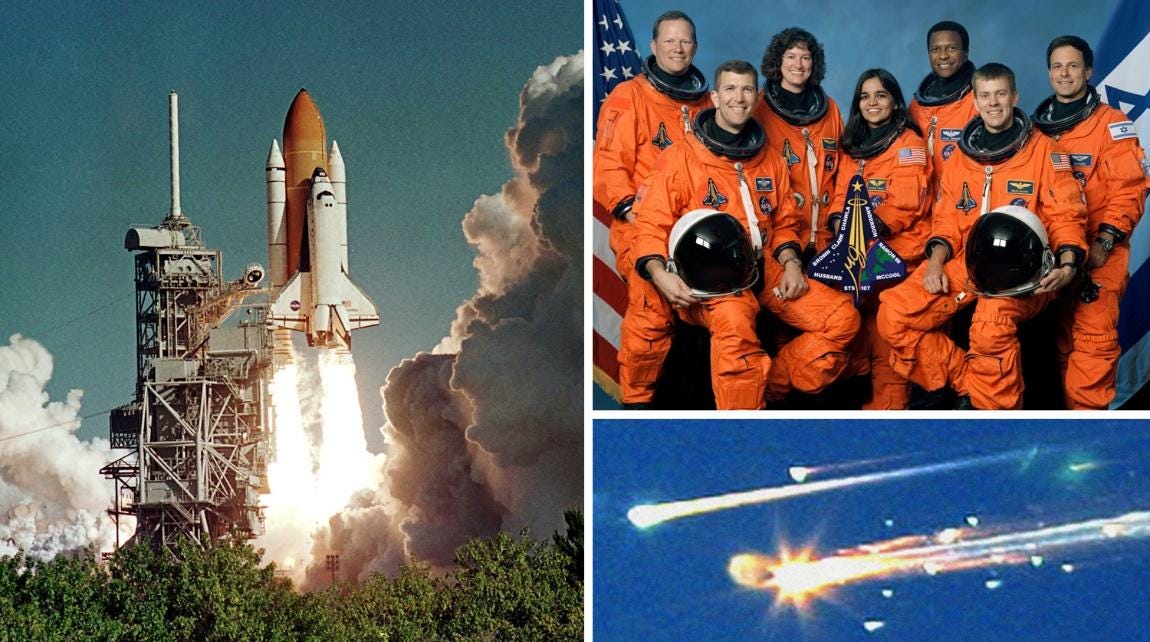Decoding Space PR: Lessons from Agencies, Iconic Campaigns, and Crisis Playbooks
Did you know NASA and ESA employ distinct PR strategies? Discover what startups can learn from them, navigate space-tech crisis management, and uncover the most unique space PR campaigns.
Issue 55. Subscribers 8272. Gleaning insights from both the Vice President of Marketing & Strategy at Griffin Communications Group and the Founder of Planet Partners who also serves as the President of the Space Communications Alliance network.
Recently, we published a comprehensive guide specifically designed for space tech startups, highlighting effective, budget-friendly PR strategies and pinpointing where to find expert counsel. We meticulously analyzed the strategies employed by SpaceX, Blue Origin, and Virgin Galactic. The response was great — this piece swiftly climbed the ranks to become one of our most read and shared articles, leading to a lot of feedback from our readers. Given its resounding success, we're thrilled to introduce a sequel. This follow-up delves deeper into the PR blueprints of major space agencies, offering startups invaluable insights. We'll also showcase standout space PR campaigns and provide a balanced look at both exemplary and flawed crisis communication instances.
We'd like to begin by sharing insights from our conversation with Brett Griffin, Vice President of Marketing & Strategy at Griffin Communications Group, a globally renowned leader in space communications and PR.
‘PR is pivotal in shaping public perception and garnering support for space exploration endeavors. It helps educate the public about the scientific and technological advancements achieved through space exploration. It helps promote a broader understanding of the potential benefits, including technological spin-offs, job creation, and solutions to global challenges like sustainability, climate change, and resource scarcity—furthermore, PR aids in crisis management.
The space industry is inherently risky, and when accidents or setbacks occur, transparent and effective communication is essential to maintain trust and support. When you have mere seconds to grab someone’s attention, you must be certain you’re connecting them with the right message at the right time.
Data and artificial intelligence are two of the most transformative forces helping companies revolutionize their media and PR strategies. The days of making "educated guesses” about customer behavior and preferences are gone. Data has become the lifeblood of modern business operations, with companies seizing a wealth of intelligence to gain deep insights into their target audience's behaviors, preferences, and sentiments. Companies that harness these resources will undoubtedly lead in customer engagement and create effective and successful campaigns.’
Capturing Attention: How Space Agencies Engage Their Audience
NASA
The methods employed by market players to engage and maintain the attention of their audience are vast and varied. A prime example is NASA, which utilizes a comprehensive set of digital marketing tools to keep its audience intrigued.
1. Active Social Media Presence: NASA maintains an active presence across various social media platforms, including but not limited to Twitter, Instagram, Facebook, Flickr, Twitch, Dailymotion, Giphy, LinkedIn, Pinterest, Tumblr, Snapchat, Reddit, and YouTube. Through these platforms, NASA shares awe-inspiring images and videos from their ongoing missions, as well as archives. For instance, they once shared an image from the Spitzer Space Telescope, suggesting followers gift an interstellar rose for Mother's Day.
However, their engagement isn't limited to mere visuals. A few years back, NASA launched a SoundCloud account, allowing its audience to not just see space but also hear it. According to NASA's social media manager, these audio recordings and podcasts enabled them to reach a completely new audience.
2. Developing Direct Communication Channels: Beyond social media, NASA invests in direct communication channels with its audience. Their official website serves as a hub where they publish news, share blog posts about their missions and discoveries, and even broadcast space-related shows on their in-house TV channel.
3. Launching a Streaming Service: In late July of 2023, NASA announced the inauguration of yet another engagement channel—a dedicated streaming platform. Users can tune into live broadcasts from the agency and watch series about NASA's various missions on this platform. Moreover, NASA intends to produce several original series. This new streaming platform will be available for free and ad-free across multiple devices such as iOS, Android, the agency's website, and TV streaming devices like Roku, Apple TV, and Fire TV.
Building a Community: NASA's Multi-Faceted Engagement Approach
Building upon the previously discussed strategies, NASA’s ambitious endeavors don't stop at digital engagement; they actively foster a robust community to magnify their space exploration goals.
1. Community Engagement through NASA Social: NASA extends its outreach by actively involving its community through the NASA Social program. This initiative encourages followers to disseminate information about their missions, scientific discoveries, and more across social media platforms. In a bid to cultivate this relationship further, NASA disseminates newsletters and hosts events where participants get an exclusive peek behind the curtain. They get opportunities to interact with NASA’s scientists, engineers, and astronauts. For instance, NASA has organized tours of the Michoud Assembly Facility (MAF) in Louisiana, where its rockets are manufactured. During such tours, attendees were permitted to photograph the Orion spacecraft's body, flight equipment for the Space Launch System rocket, the Pegasus barge, and other unique instruments.
2. Collaborations with Influencers and Celebrities: Prominent figures and opinion leaders also play a role in amplifying NASA's outreach. A notable collaboration from three years ago saw NASA teaming up with popular musician Lil Nas X. Together, they held a virtual concert within the children’s game Roblox, simultaneously celebrating the successful landing of the Perseverance rover on Mars.
3. Partnership Marketing and Competitions: While it's well-known that NASA collaborates closely with companies like SpaceX and Blue Origin, their partnership endeavors extend beyond these. Additionally, NASA, in conjunction with crowdsourcing platform HeroX, Fortnite creator Epic Games, and company Buenda, organizes various competitions. In one such initiative, participants were encouraged to simulate virtual reality scenarios astronauts might encounter on Mars. The top developers were rewarded with monetary prizes at the end of this competition.
4. Engaging Through Data Visualization: Lastly, NASA attracts audiences through interactive tools and data visualization. They present vast amounts of information in accessible formats, allowing people of all ages to delve deeper into the mysteries of space and enrich their understanding.
Personalizing Content and Gamification: NASA's Tailored Approach to Audience Engagement
Building upon the myriad strategies NASA employs to connect with its audience, the space agency has developed additional layers of personalization and interactive tools to captivate space enthusiasts and potential investors alike. Here's a more in-depth look:
1. Personalized Content Delivery: NASA appreciates the varied interests of its vast audience. Recognizing this, they curate tailored email newsletters focused on specific missions that subscribers have previously expressed interest in. By segmenting their audience based on their preferences, NASA ensures that recipients receive content most relevant to their space curiosity.
2. Leveraging Gamification: Another dimension of NASA's engagement strategy is the use of gamification. Interactive applications, such as their game "Mars Rover", offer players an immersive experience where they can control a rover on Mars and undertake scientific missions. By tapping into the gaming community's enthusiasm, NASA bridges the gap between education and entertainment, fostering a deeper appreciation for space exploration.
3. Comprehensive Marketing Framework: NASA's marketing approach, typically encompassing the following stages, ensures consistent and widespread engagement:
Press Briefing: The initial step usually involves a press briefing detailing specific missions. For instance, they might share insights on scientific investigations planned for a space station or delve into the specifics of a particular experiment they aim to conduct.
Content Creation: Following the briefing, NASA actively disseminates mission details across its platforms – be it its official website, social media channels, or blogs. Content is often strategically planned, with posts preceding the launch, updates during the mission, and debriefs once the spacecraft returns to Earth.
Engaging Opinion Leaders: As the mission's launch date nears, participants from the NASA Social program are typically invited to visit the Kennedy Space Center in Florida. The objective behind such initiatives is to tap into the outreach of these influencers and capture an audience segment previously indifferent to NASA's activities. Additionally, to foster a broader engagement, NASA encourages the public to pose questions during pre-launch briefings using the hashtag #AskNASA on social media platforms.
Live Broadcast: Approximately an hour before a spacecraft's launch, a live stream kicks off on NASA TV. This broadcast often showcases interviews that shed light on the mission's intricacies. Following a successful launch, NASA promptly issues a press release and holds a press conference, encapsulating the mission's highlights and potential impacts.
Through such structured and multifaceted strategies, NASA not only ensures that space exploration remains at the forefront of public discourse but also offers founders and investors a template on how to effectively engage and captivate diverse audiences in any industry.
How do space agencies from other parts of the world promote themselves?
While NASA is a prominent name in space exploration, it's not the only space agency actively promoting its work and building awareness.
European Space Agency (ESA)
For instance, the European Space Agency (ESA) utilizes social media and its communication channels for promotion, similar to NASA. They broadcast events live, expand their network of partners, and conduct media briefings. What's more, the ESA facilitates public meetings with astronauts and provides open access to images, documents, and other files for online dissemination. However, ESA's promotional strategy differs significantly from NASA's. While NASA aims to engage audiences of all ages and backgrounds in an open dialogue using various tools, ESA tends to lean towards a monologue approach with its audience.
China National Space Administration (CNSA)
The China National Space Administration (CNSA) maintains a more reserved communication style. Their promotional activities mainly revolve around disseminating official press releases, film and television promotional materials, and organizing official events.
Space Agencies in MENA Countries
Some space agencies in the Middle East and North Africa (MENA) region are actively seeking to garner attention. The United Arab Emirates (UAE) stands out with notable achievements among MENA countries. For instance, they launched the first Arab spacecraft, "Hope," which reached Mars, and an interplanetary probe to study the asteroid belt between Mars and Jupiter. Remarkably, the UAE initiated its space program from scratch just nine years ago. Additionally, the UAE Space Agency fosters partnerships with private companies and space agencies from the USA, Russia, China, France, India, Japan, and other nations.
We spoke with Lukasz Wilczynski, the Founder of Planet Partners and President of the Space Communications Alliance network, seeking his perspective on how space PR diverges from PR in other sectors and the importance of getting it right for space companies. Lukasz responded,
"The distinction really hinges on the target audience. In B2B communication, the space sector doesn't differ greatly from other industries. However, it's essential to keep pace with B2B communication trends and infuse a touch of creativity to avoid overly technical discourse. When we shift to B2G communication, which targets policymakers or decision-makers, there's a need to underscore the space sector's long-term objectives and its consequential impact on the national economy. After all, space initiatives significantly shape economic growth, scientific advancement, and technology innovation. This narrative should be the cornerstone of such dialogues.
When engaging with the general public or spearheading STEM campaigns, we encounter the most significant divergence in 'space PR.' The space domain uniquely captivates and fuels the audience's imagination, providing an unparalleled emotional resonance. Nevertheless, it's paramount to maintain a balanced and ethical communication approach, steering clear of undue sensationalism. To effectively manage PR in the space sector, a deep understanding of its distinctive technologies, business paradigms, and overarching implications — be it B2B or B2G — is non-negotiable."
Unique PR Campaigns in Space Exploration
The vastness of space offers an appealing canvas for advertising and PR campaigns. Let's look at some intriguing space-related campaigns:
1. A Milky Way Record in the Guinness Book
In August 1997, Israel's leading food manufacturer, "Tnuva," decided to shoot an advertisement for their products aboard a space station. This audacious move not only distinguished the company from its competitors but also secured a place in the Guinness Book of Records as the first commercial filmed in space. For further details on advertising, please refer to one of our earlier posts.
2. A Violinist atop a Space Center
NASA, in a bid to draw attention to its programs, staged an unforgettable PR event. They invited globally acclaimed violinist Lindsey Stirling to perform an original composition on the roof of the Kennedy Space Center. This event had a dual purpose: to honor women's contributions to NASA's history and to promote the upcoming Artemis lunar program.
3. Rocketing Adult Toys into Space
A rather risqué campaign was conducted by Japanese adult toy manufacturer TENGA in collaboration with private space firm Interstellar Technologies. Under the banner "Love, Freedom, Tenga, and Space," the initiative involved three missions that dispatched a special capsule containing 1,000 wishes from fans, official mascots TENGA ROBO and EGG DOG, and an adult toy – the TENGA CUP fitted with sensors to measure air pressure and temperature. Based on the gathered data, TENGA aims to create the world's first adult toy suitable for use in space.
4. "Love You to the Moon and Back" Campaign
Companies Astrobiotic Technology and DHL are pushing the envelope further. They intend to deliver over 100,000 fan messages to the Moon encapsulated in special modules. To be part of this endeavor, enthusiasts were asked to click selfies with their loved ones and send the photos to the organizers.
Protecting Your Company's Hard-Earned Reputation in Space Exploration
Space exploration has captivated humans for decades. However, venturing into the unknown comes with risks, and the way companies respond to adversities can define their legacy. Effective crisis communication is pivotal, as evidenced by historical events in the space industry.
1. Apollo-1 Tragedy: The Price of Unpreparedness
In a devastating mishap, the command module of Apollo-1 caught fire, leading to the death of three NASA astronauts. The aftermath revealed that NASA was ill-prepared for crisis communications:
The space agency announced the astronauts' deaths two hours after the incident.
Media outlets received inconsistent information, and NASA resisted sharing further details pending an investigation.
The agency faced accusations of providing false testimonies to Congress.
The lack of a coherent communication strategy allowed rumors to fester, magnifying criticisms of NASA, and eroding the public's trust for a prolonged period.
2. Challenger Disaster: Learning From Past Mistakes
On February 1, 2003, the space shuttle Challenger disintegrated upon re-entering the atmosphere, resulting in the death of all seven astronauts onboard. NASA's response, however, starkly contrasted its previous missteps:
The agency immediately shared available information.
Daily press conferences were held for several weeks.
A single, trusted spokesperson represented NASA.
Comprehensive investigation results were made public.
Both the media and the public lauded NASA for its transparency, preventing significant reputational damage.
3. Virgin Galactic's Test Flight Accident: A Masterclass in Crisis Response
When a Virgin Galactic spacecraft crashed during a test flight, killing a pilot, the company's reaction mirrored the gold standards of crisis communication. Sir Richard Branson's response was exemplary:
Like NASA, the company swiftly acknowledged the tragedy, providing exhaustive details to the public.
Branson immediately visited the crash site, updating the public on the investigation's progress.
The company offered significant support to the affected families.
Virgin Galactic extended an offer to refund prepayments to its clients. Surprisingly, most clients chose to stand with the company. One even showcased their commitment by getting a Virgin Galactic logo tattoo.
The space economy is rapidly expanding as new private enterprises emerge. Consequently, effective communication with both existing and prospective clients, as well as the broader audience, becomes increasingly crucial. For founders and investors with ambitions in space, understanding the gravity of reputation management is paramount. As the space industry continues to grow, preparing for unforeseen challenges with robust crisis communication strategies will be a defining factor in maintaining trust and reputation.
We trust that this article offers valuable insights into best practices for promoting your SpaceTech startup and mitigating potential setbacks. Should you have any queries, don't hesitate to contact us at hello@spaceambition.org.
Engage with us on LinkedIn: www.linkedin.com/company/space-ambition
Connect with us on X (formerly known as Twitter): twitter.com/SpaceAmbition
Explore our website: spaceambition.org
















